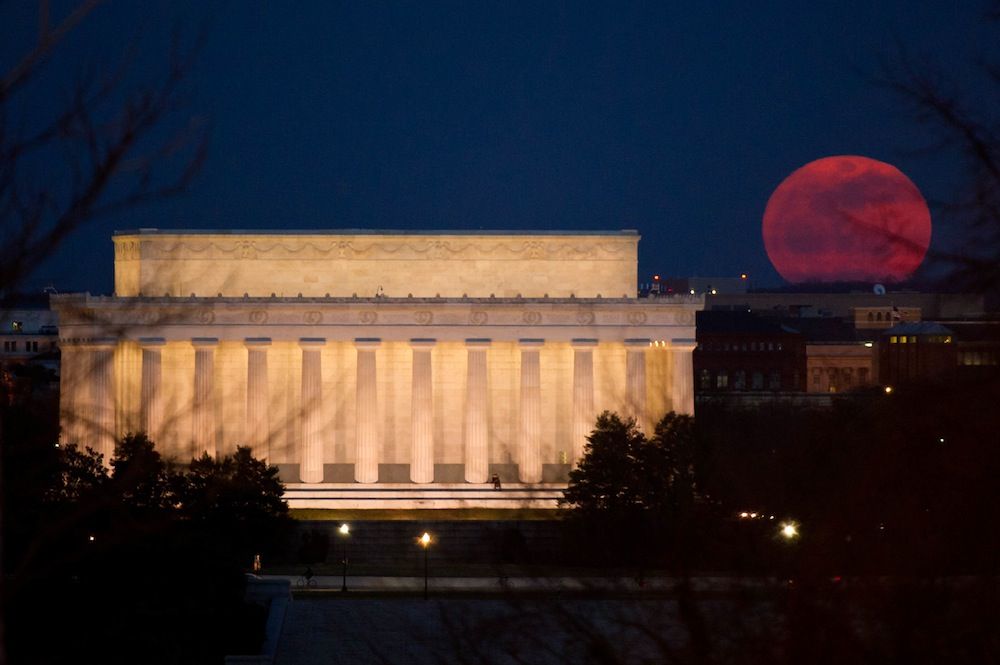Supermoon Sunday: Largest Full Moon of the Year Rises

The biggest and brightest full moon of the year — a dazzling "supermoon" — will rise tomorrow (Aug. 10).
Sunday's supermoon will be the largest of a summer trifecta, along with a full moon that lit up skies in July and another that will occur in September. However, this weekend's sky show will be a true supermoon, the largest of the three, Noah Petro, a research space scientist at NASA's Goddard Space Flight Center in Greenbelt, Maryland, told Live Science.
On Sunday at 2:10 p.m. EDT, the moon will reach its fullest phase and will appear 14 percent closer and 30 percent brighter than a typical full moon. Even though the moon will turn full during the day in the United States, stargazers don't need to worry about missing it. To the untrained eye, the moon will still appear full well into Sunday night. [In Photos: Glitzy Images of a Supermoon]
Supermoons happen when the moon enters its fullest phase as it reaches the closest point to Earth during a month-long, asymmetrical orbit. That point is called "perigee,"and it's about 31,000 miles (50,000 kilometers) closer to Earth than the farthest point in the moon's orbit, called "apogee."
The confluence usually happens once a year, Petro said. The supermoon in July and the supermoon coming up in September are full moons that happen on the same day of perigee. But this Sunday, the moon will become full within the same hour as perigee, making it the largest full moon of 2014.
Despite some conspiracy theories that suggest otherwise, supermoons do not trigger any doomsday conditions on Earth. Their influence on the tides are almost unobservable, Petro said. Superstitions and myths have led some to believe that the large full moon can drive a person mad, but supermoon will, at worst, confuse you with an optical illusion — supermoons sometimes appear much larger than they really are. Astronomers are still unsure exactly why this so-called "moon illusion" happens.
When the moon hangs low near the horizon, objects in the foreground, such as buildings and trees, can make the satellite appear enormous to stargazers. Scientists think the way humans perceive space may play a role in this visual trick. People consistently say the horizon looks farther away than a point in the sky directly above them. If something seems farther away but it's actually not, the brain can be tricked into thinking the object is larger than it really is. That's why a moon hanging high in the sky seems much smaller compared to a giant supermoon looming just over the horizon.
Sign up for the Live Science daily newsletter now
Get the world’s most fascinating discoveries delivered straight to your inbox.
Petro said there are a few tricks for breaking this moon illusion. "If you hold up your thumb next to the moon, the frame of reference helps your brain put things back into size perspective," he said.
An even more extreme way to stop the illusion is to turn away from the moon, bend over and look backwards at it from between your legs, Petro said. This should prevent the brain from processing any distance clues because the world looks unfamiliar from the unusual angle.
The next "almost" supermoon will happen on Sept. 9.
Follow Kelly Dickerson on Twitter. Follow us @livescience, Facebook & Google+. Original article on Live Science.











